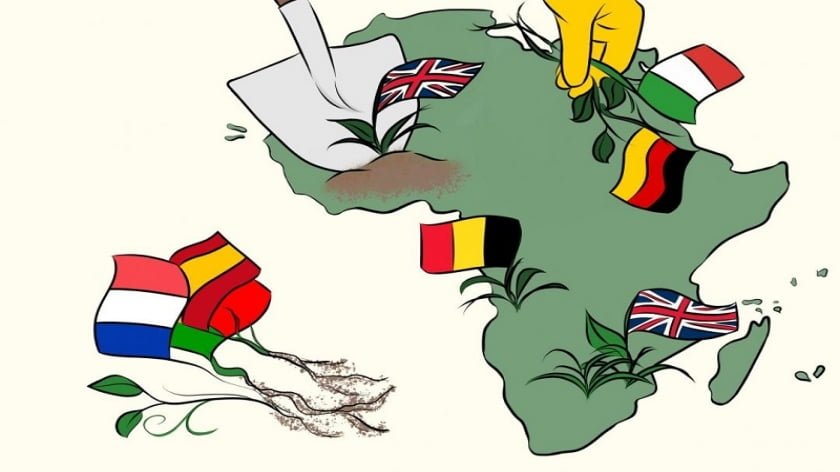US Woos India into 100-Year Alliance Against China
Even as the countdown begins for US President Donald Trump’s highly anticipated state visit to China, US Secretary of State Rex Tillerson is heading to India next week in a delicate geopolitical balancing act.
A landmark speech Tillerson gave at the Center for Strategic and International Studies in Washington on Wednesday, titled ‘Defining Our Relationship with India for the Next Century’, served as preamble to his visit. His remarks gave powerful optics projecting India as a ‘pivotal state’ in the US’ future regional strategies.
The US evidently hopes to pile pressure on Pakistan, which Tillerson will also visit, to cooperate in forging a negotiated settlement with the insurgent Taliban in Afghanistan and remote Pakistan territories. Tillerson’s speech also became a repartee to the triumphalist narrative of Chinese President Xi Jinping’s report at the 19th Communist Party Congress, which began in Beijing just a few hours earlier on October 18.
The Trump administration has also encouraged India to step up in Afghanistan. Tillerson outlined an intensification of cooperation with India in counterterrorism and maritime security, and held out a profound US pledge that “the world’s two greatest democracies should have the world’s two greatest militaries.”
Tillerson also signaled that the US will be leaning on India to offset China’s influence and proposed a new regional security architecture with the US, Japan, India and Australia as its main pillars. The US claims that it intends to use defense ties with India to challenge China’s rising military profile and regional influence, while also boosting its arms exports.

But Delhi has also witnessed a new type of relationship between the US and China. This is a game India, too, can clearly play, as Delhi balances its own defense ties. When Tillerson arrives in Delhi, Indian armed forces will be in the middle of a 10-day landmark military exercise with Russia, unprecedented for its involvement of all three services – army, navy and air force.
The US, meanwhile, is struggling to clinch the sale of its Predator Guardian UAVs and F-18 and F-16 fighter jets to India, while Delhi takes time to weigh its options. Again, Tillerson spoke effusively about the sale of hi-tech weapons, but never once mentioned co-production, as India does for certain weapons with Russia, leave alone any nod to ‘Make in India.’
Suffice to say, behind the high-flown American rhetoric about a bolstered strategic alliance with India, ‘America First’ very much remains the key template in Trump’s foreign policy approach.
Tillerson also singled out ‘energy cooperation’ in his speech. The US shale industry is targeting India’s rapidly growing market and American companies are keen to enter the lucrative downstream retail sector as well as secure contracts to construct pipeline grids connecting India’s far-flung regions.
Still, India will be watchful of entrapment in the US maneuvering vis-à-vis China and Pakistan. One lesson that Delhi learned from the recent border face-off with China is that there is no substitute to bilateral diplomatic and political tracks to navigate complex issues and make relationships stable and predictable.
On the other hand, US-China interdependency is a geopolitical reality, as evident from Trump’s prioritization of China (alongside key ally Japan) in the itinerary of his first Asian tour, slated to begin on November 3.
It is the nuances in the US’ approach to Pakistan, however, that Delhi will watch most closely.
Lately, the US-Pakistan relationship has become kinetic, thanks to the Pakistani military’s rescue of a Canadian-American couple held hostage for five years in the lawless Pakistan-Afghan border region, and, importantly, Islamabad’s initiative to organize a meeting of the moribund Quadrilateral Consultative Group (comprising US, China, Pakistan and Afghanistan) on October 16 in Muscat.
Pakistani army chief General Qamar Javed Bajwa attended the Muscat meet. The Voice of America, for one, already senses change in Pakistani thinking. “The events have fostered some optimism about the US relationship with Pakistan… Pakistan still needs the United States on its side, as Pakistan fears India and wants continued financial aid and military material,” the US Congress-funded broadcaster reported.
A State Department official said in Washington on Wednesday, “America’s relationship with India does not come at the expense of Pakistan or vice versa. There are things that the US can do to help alleviate some of the tensions on Pakistan’s borders around Afghanistan and in India.”
The official continued: “When the president gave his remarks about Pakistan, he talked about a lot of the positive aspects of the bilateral relationship… we are having much more serious conversations about (Pakistan) being a partner for achieving our priorities in the region… We have many common interests and common enemies in the region.”

Tillerson added further nuance at the CSIS gathering, saying that the Afghanistan issue can be solved only by addressing “regional challenges” and that Pakistan and India are “important elements” in that effort. Therefore, he added, “we intend to work closely with India and with Pakistan to, we hope, ease tensions along their border as well.”
Of course, any suggestion of outside intervention in India-Pakistan border tensions will put Delhi on guard. The “border” that US officials refer to is the turbulent ‘Line of Control’ separating the regions of Kashmir under Indian and Pakistani control.
Unsurprisingly, the Foreign Ministry reaction in Delhi to Tillerson’s speech was polite but noticeably reticent, calling it “significant” for bringing out the “various strengths” of the US-Indian relationship and highlighting the two sides’ “shared commitment to a rule-based international order” and appreciating Tillerson’s “positive evaluation” of the relationship and “his optimism about its future directions.”
By M.K. Bhadrakumar
Source: Asia Times







